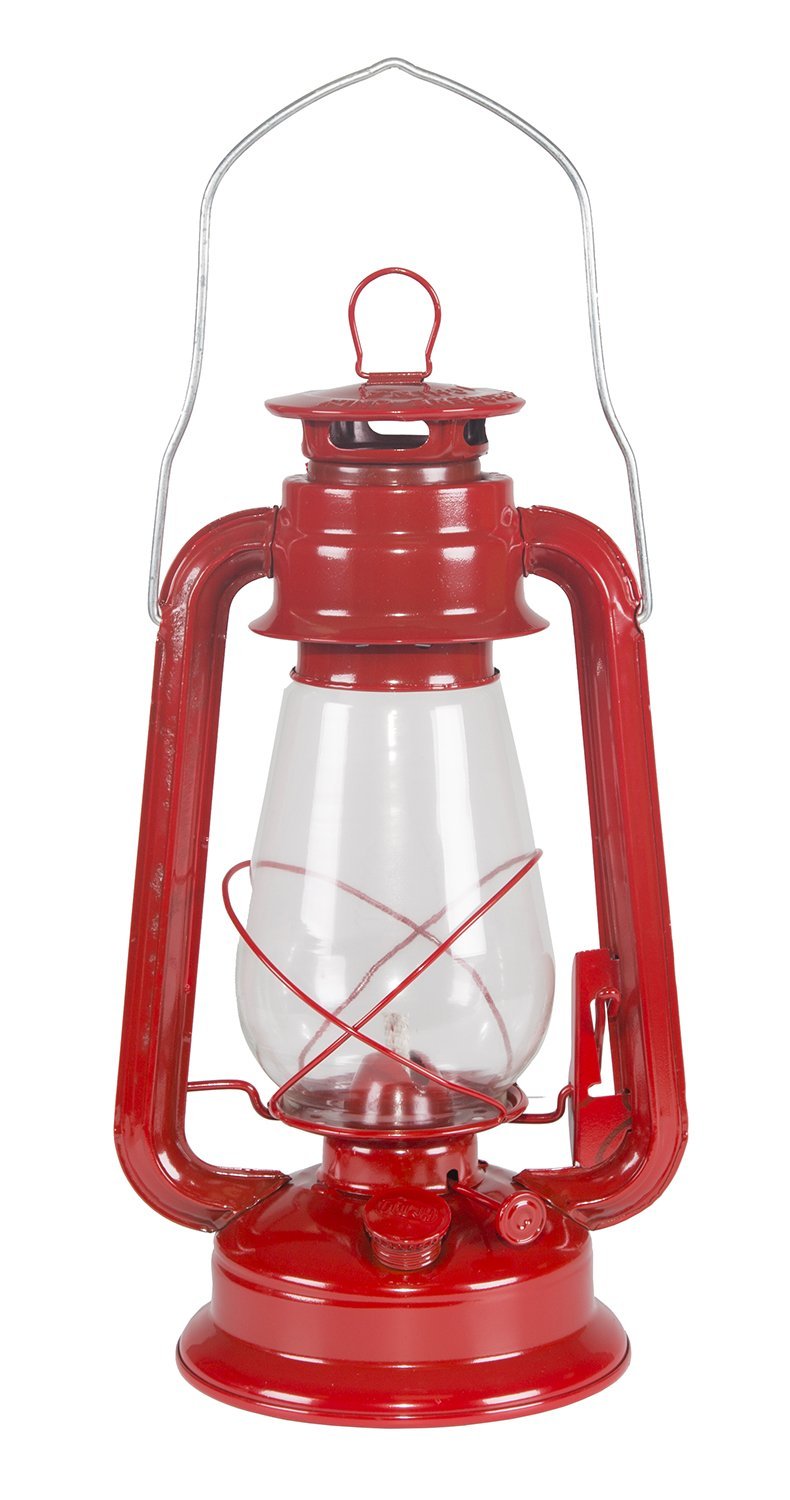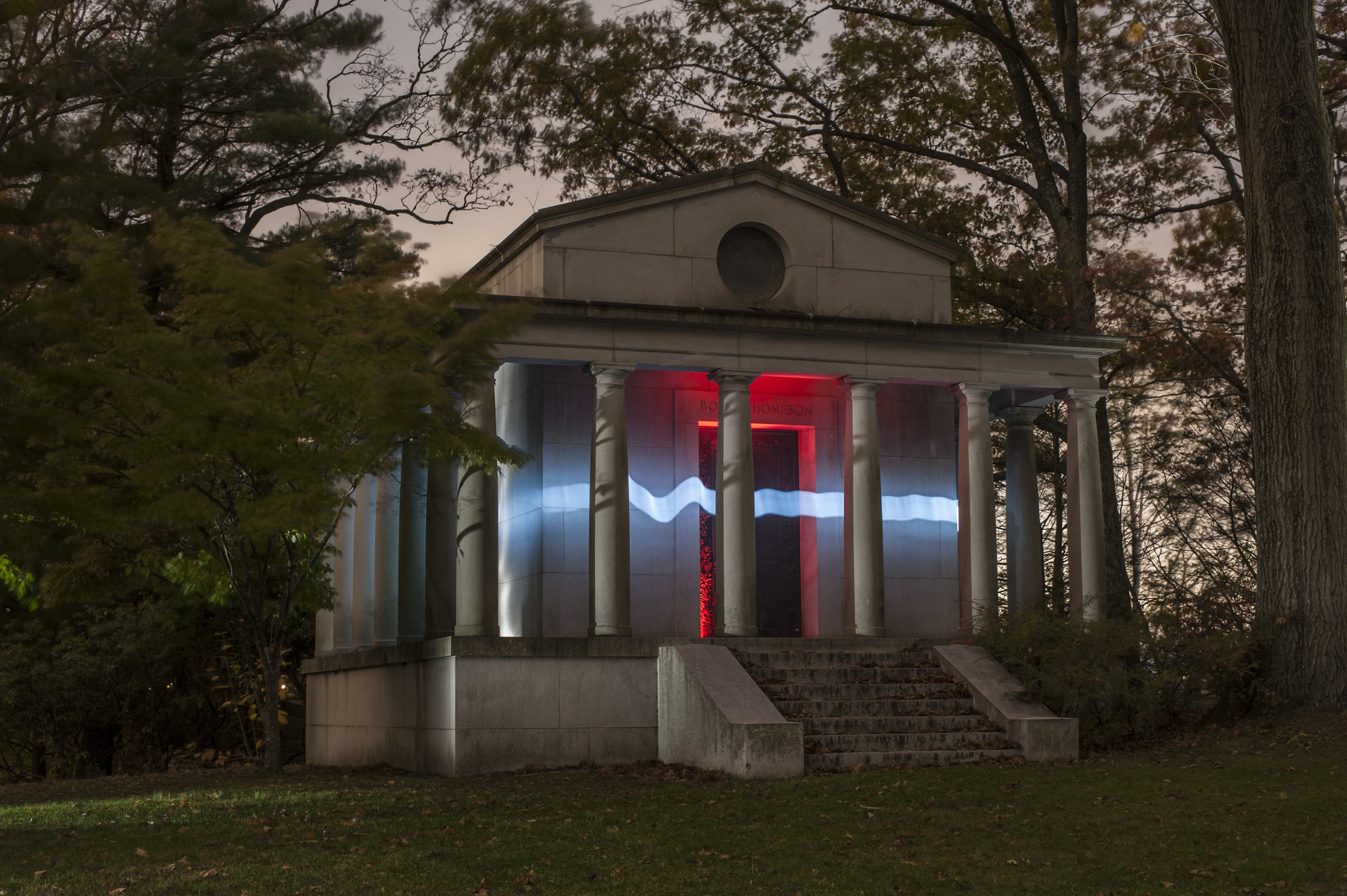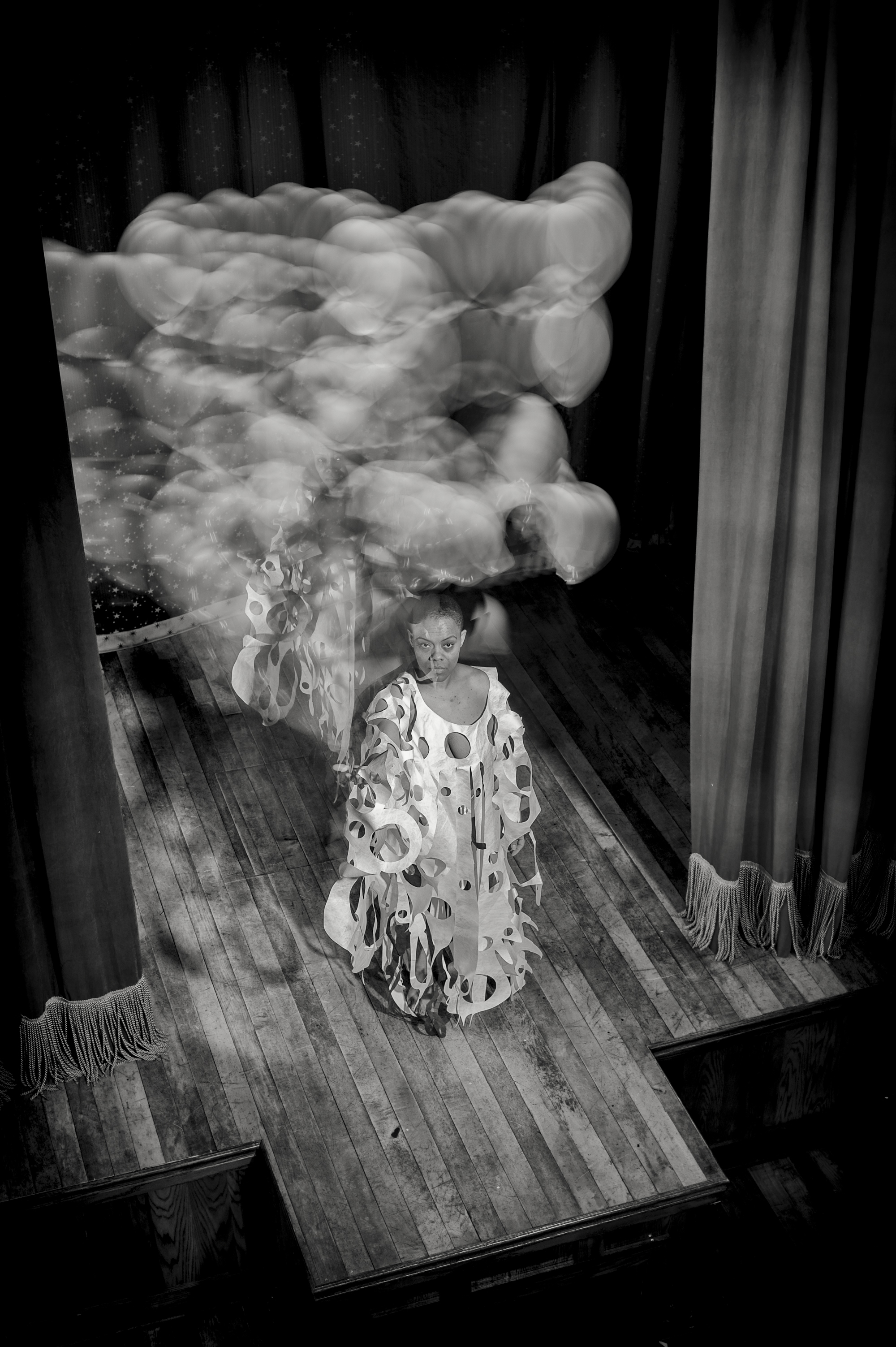In 2011, Russian photographer Sergey Churkin founded what is now known as the Light Painting World Alliance (LPWA). Its goal is not only to unite artists who practice this niche within a niche within a niche, but also to help light writers around the globe develop their own skills as a way to elevate the quality of the art form as a whole so that it’s more globally recognized in the art world. It’s a lofty goal. And it’s one we applaud.
Since its inception, LPWA has brought light writers together in various ways, including its website, Facebook and Instagram presences, international exhibitions, award presentations, meetups, and meetings and conferences hosted throughout the world.
Fighting in the Rain. Light writing artwork done in collaboration with Nikolay Trebukhin. Olympus E-M1, Olympus M.Zuiko 12-40mm f/2.8 lens. 5 minutes, f/22, ISO 500. © Sergey Churkin and Nikolay Trebukhin.
The group has announced its newest venture: International Light Painting Day (ILPD), which will occur on May 16—the date that UNESCO declared as the International Day of Light. “As in any social action, participation is even more important than results,” reads the ILPD website. “International Light Painting Day will attract people to our art, give them a new way of self-expression, and will make friends between participants.”
LPWA encourages night photographers everywhere in the world to participate, whether through official ILPD events, with a local photography group, or even just by sharing the art form with friends and acquaintances at personal gatherings.
Recently we were able to chat with Sergey about his own growth as a light writer, how all of this got started, where it’s going, and what to expect on May 16.
(We should note a terminology difference. What LPWA calls “light painting” is largely what we at National Parks at Night term as “light writing.” We define the former as illuminating a subject with a light source, and the latter as recording the actual light source as part of the composition. For the purposes of being consistent for our audience, we will use our terminology and definitions in this post, except when mentioning the official names of organizations and events.)
Q: Can you tell me about your passion for light writing? How did you start doing it, and how has it affected your development as an artist?
Sergey: In my work I am constantly looking for new visual forms and new technologies. In 2008, when I first saw light graffiti, I thought it was computer graphics, and I wondered how to achieve the same effect. So I tried drawing something like it on my computer, but all my attempts were futile. That upset me. I thought, “How is it someone else can draw this, but not me?” Then I discovered that the picture I was trying to model wasn’t computer graphics—it was photography with patterns of light!
That’s when I discovered a galaxy called Light Writing. Almost at the same time, my eldest son showed me his own drawings with light.
Relax Time. From the series “Real Life of Unreal Person.” Canon 5D Mark II with a 28-135mm f/3.5-5.6 lens. 202 seconds, f/8, ISO 200. © Sergey Churkin.
Everything came together for me. I understood this technology. I realized that in my hands was a new, powerful and versatile tool for design.
I spent nearly a year attempting to combine light writing with video, but it turned out that the specialties of drawing light impose fairly strict limits on its use in video projects. I do not like restrictions in the art process, so I decided that photography would give me more opportunities to express myself. Since then, I paint with light.
I’m a professional video designer, so I know a lot about designing nice images. Light writing for me is another way to express my visual fantasies, with much more effective and natural execution. So, I already was a visual artist before falling into light writing. But light writing taught me to be more patient—to spend more time for planning and preconstruction of my artworks. I started to develop my own techniques and tools, which could give me limitless purposes. Thus, light writing brings the sense into my life.
Q: What are some of your favorite light writing tools?
Sergey: I prefer to use light tools like I would use real paint brushes. And I love handmade tools. Manufacturer’s tools bring comfort in making art, but also limitations of art itself. That is why I also try to develop my own techniques and my own tools.
Portrait of Sergey's friend Vikthor Clarke, part of the series “Friends in Light.” Created with a handmade custom light brush. © Sergey Churkin.
Q: What prompted you to spread this passion by forming LPWA?
Sergey: I realized that our genre had two problems. First was low awareness, both among the ordinary public and among the art business. Most people simply do not know what light writing is. Second was the problem of quality. Too many people were doing light drawing just for funny snapshots.
After some thought, I came to the conclusion that anyone alone does not change anything. By improving my own skill, I can achieve success and recognition, but that wouldn’t resolve those problems. To promote light writing to the masses needed a collective effort. I had a little experience with creative associations for Russian TV designers and promoters in the 2000s, so I saw what a collective mind with an active nucleus can do. I figured, why not do the same for artists writing with light?
But of course, it would be ridiculous to think that all the work of making this huge Alliance since 2011 was done just by one person. It was done mostly by artists themselves. I only help them with ideas, inspiration and courage. I am happy to be friends with dozens, or even hundreds, of artists around the globe. And I am very grateful to all my light friends for their countless support, which really makes LPWA what it is.
Dissected Guitar. Canon 5D Mark II with a 28-135mm f/3.5-5.6 lens. 19 seconds, f/13, ISO 160. © Sergey Churkin.
Q: How quickly did LPWA grow?
Sergey: Since 2011, the Alliance has grown to about 650 registered members. In fact, after 2015 I didn’t pursue more members as a goal anymore. What’s most important for me now is to inspire the community to be more active in making and learning art. The things we’ve been doing the last two years have showed me that this goal is very possible.
Now I am concentrating more on organizations, developing relationships between LPWA and museums, galleries, festivals and other cultural institutions.
Q: What’s next for LPWA—how do you hope it evolves?
Sergey: Honestly, right now I am at a crossroads regarding LPWA’s future. Eight years of effort has told me that sometimes I need to take a break, to analyze past experiences. I see how much our community has grown since 2011, I see what is going on in our industry, and I see how new trends are born and die. So I keep that all in mind.
Some of the goals of our starting years were realized successfully, and now the community requires new ones. We’d like to get regular columns in the world's largest magazines about art and photography, and over time would like to publish our own magazine, Light Painted World.
Red Treble Clef. Image made with customized light blades. © Surgey Churkin.
We’re also working to develop close contact with manufacturers of software and light tools, because they are not necessarily light painters and don’t always know what features should be in these devices. We need fine-tuned software and new light tools for professional light writing.
We’d also like to develop close contacts with interior designers, the manufacturers of decoration accessories, and fashion designers. Light writing should be more than only photos or prints—we can use our artworks as a basis for many more goods.
And off course, a major aspiration for the near future is to get official recognition from UNESCO for our art form, in the form of May 16—International Light Painting Day!
Q: you have organized some huge collaborations of photographers working on one image. Can you talk about that?
Sergey: It’s another inspiring and powerful way to involve an audience with the light writing world, to do these massive collaborative artworks.
Our first experience like this was done in 2013 at our second LPWA worldwide exhibition in Paris, when 20 artists all together made a light writing animation on Place Concorde. Next was a massive collaboration on Plaza de la Gesta in 2014, when 34 artists made the IYoL2015 logo; and at the Dorum (Germany) LightHouse Meet-up, 24 artists created the same logo. An outstanding collaboration was made in Longhushan, China, where 13 light painters created a massive image and animation.
This is a very, very cool activity for all our artists.
Collaboration light writing made during the LPWA Roma Meet-up 2017. Olympus OM-D E-M5 Mark II, Olympus M.Zuiko 7-14mm f/2.8 lens. 1.3 minutes, f/6.3, ISO 200. Click here to see all credited artists.
Q: Why do you think light writing is such an intriguing part of night photography?
Sergey: For me, all parts of night photography are intriguing. Choosing a location, waiting for the proper time, finding particular details of a scene that can make this place magic, testing camera settings and tools.
But light writing itself is an endless experience with an indeterminate end. Mostly I know what I want to draw, but I always pray for a lucky chance that could give me a moment of something incredible. Experiences like that are what really intrigue me.
Q: What is your advice for someone who wants to get started in light writing, or someone who wants to learn more about it?
Sergey: The only good advice is to start with regular tutorials, regular tools and then just copy the masters. Get your first experience—try to feel the light. Make a lot of senseless images just to understand how you can use light.
Then forget all of it. Throw everything away and start to make your own light art. That is when you start following your own way, and when you no longer copy others.
Lion and His Guest. Made with light brush by Bernhard Rauscher. Canon 5D Mark II with a 28-135mm f/3.5-5.6 lens. 116 seconds, f/8, ISO 250. © Sergey Churkin.
Q: Tell us about Light Painting Day. What is the goal, and how can people get involved?
Sergey: International Light Painting Day is intended to give anyone—not only light artists—more motivation to learn about light painting and light writing. I really think that light writing is a much more inspiring art than more traditional drawing and painting. I would love to see light writing become a “family art.” Whole families could make this kind of art as a good and kind collaboration of father, mother and children! The best gratification for me could be if International Light Painting Day became a widely observed family celebration.
Of course, light painting is not just for May 16—we can celebrate this art form 365 days a year. So, International Light Painting Day is not for only professional photographers, but also for their friends, mates, family or even neighbors.
For more information about attending an International Light Painting Day gathering, see the official Event Programme. Sergey encourages individuals, camera clubs, and other groups and organizations to coordinate their own ILPD events as part of the global celebration. More more information, visit the ILPD webpage.

































































